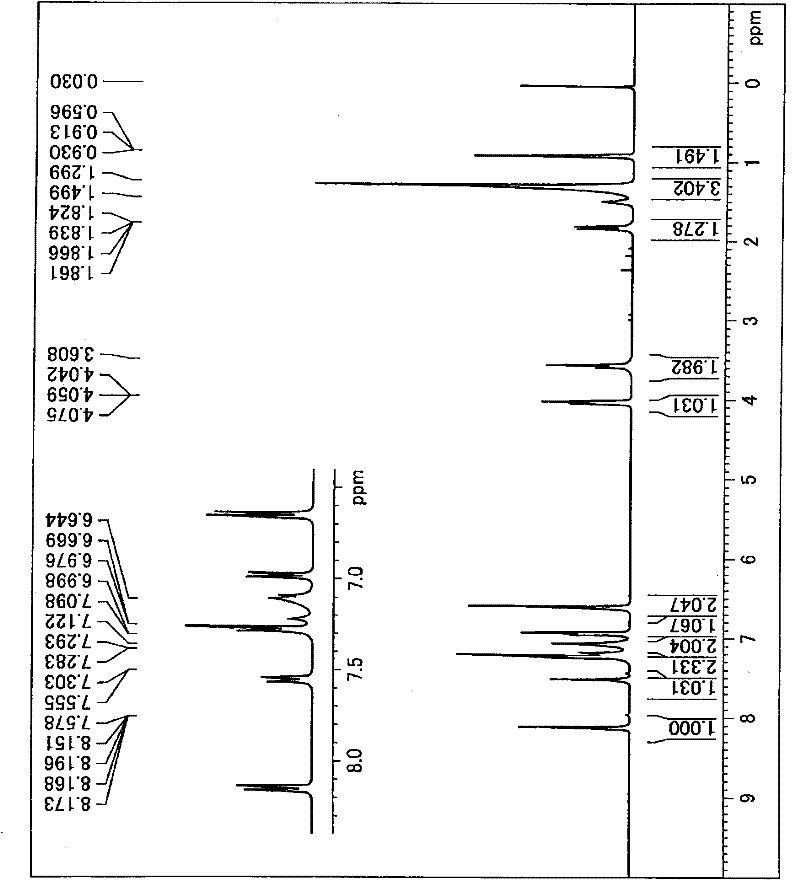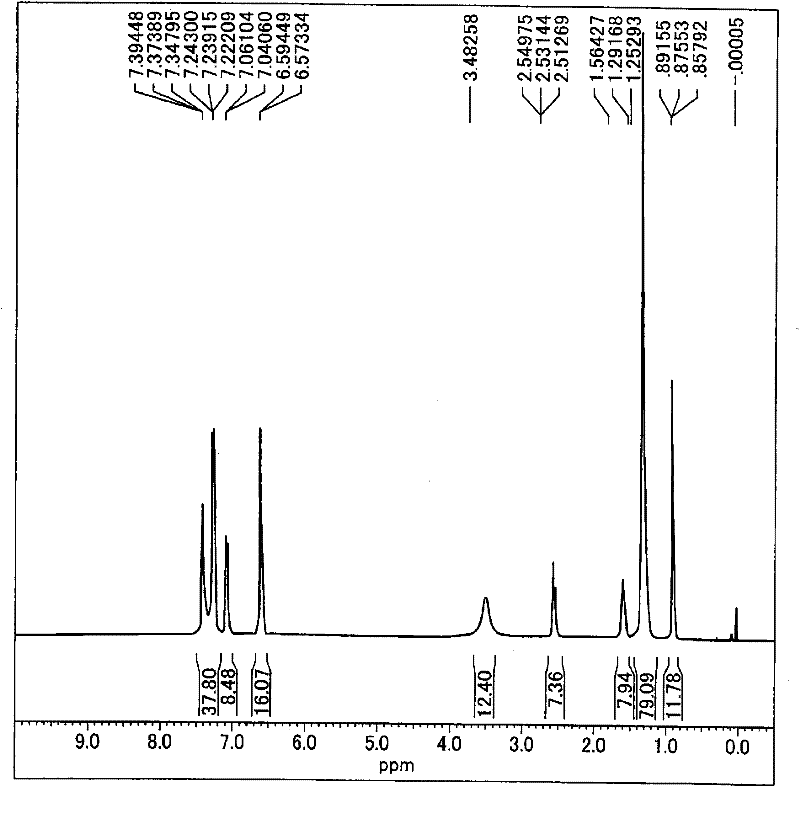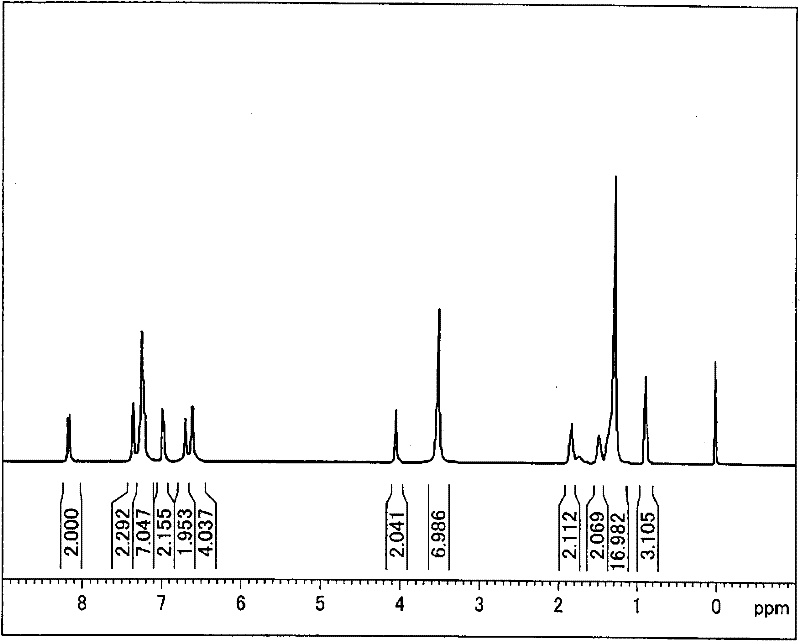Diamine, liquid crystal aligning agent and liquid crystal display element
A technology of diamine and tetracarboxylic dianhydride, applied in instruments, luminescent materials, organic chemistry, etc., can solve problems such as ion density not mentioned, brightness or contrast reduction, halftone brightness inversion, etc.
- Summary
- Abstract
- Description
- Claims
- Application Information
AI Technical Summary
Problems solved by technology
Method used
Image
Examples
example
[0335] Hereinafter, the present invention will be described using examples. In addition, the compounds used in the examples are shown below.
[0336]
[0337] Anhydride (1): pyromellitic dianhydride
[0338] Anhydride (19): 1,2,3,4-cyclobutanetetracarboxylic dianhydride (1,2,3,4-cyclobutanetetracarboxylic dianhydride)
[0339] Anhydride (23): 1,2,3,4-butanetetracarboxylic dianhydride
[0340] Anhydride (25): 1,2,4,5-cyclohexanetetracarboxylic dianhydride
[0341] Anhydride (37): 3,4-dicarboxy-1,2,3,4-tetrahydro-1-naphthalene succinic dianhydride (3,4-dicarboxy-1,2,3,4-tetrahydro-1-naphthalene succinic acid hydride)
[0342] Anhydride (39): 3,5,6-tricarboxy-2-carboxymethyl norbornane 2:3,5:6-dianhydride
[0343] Anhydride (49): 2,3,5-tricarboxycyclopentylacetic dianhydride
[0344] Anhydride (68): ethylenediaminetetraacetic dianhydride
[0345]
[0346]Diamine (I-1): 4-dodecyloxybenzoic acid-4-(4,6-bis(4-aminophenylamino)-1,3,5-triazin-2-ylamino)benzene ester
[03...
Synthetic example 1 2
[0366] [Synthesis Example 1] Synthesis of Diamine (I-1)
[0367] [1-1] Synthesis of 4-(4,6-dichloro-1,3,5-triazin-2-ylamino)phenyl 4-dodecyloxybenzoate
[0368] 8.82 g of cyanuric chloride and 200 ml of THF were placed in the flask, and stirred while cooling to 0° C. to 5° C. in an ice bath to completely dissolve it. A solution in which 17.28 g of 4-dodecyloxybenzoic acid-4-aminophenyl ester was dissolved in 150 ml of THF was dropped therein while stirring. After completion of the dropping, stirring was continued for 2 hours while maintaining the temperature at 0°C to 5°C. Therein, a total of 2.53 g of solid sodium carbonate was dropped in a small amount each time in a manner that the temperature of the solution did not exceed 5°C. After completion of the dropping, the mixture was further stirred for 4 hours while maintaining the temperature at 0°C to 5°C. After stirring, the reaction mixture was transferred to a separatory funnel, washed three times with saturated brine, a...
Synthetic example 2 2
[0371] [Synthesis Example 2] Synthesis of Diamine (I-2)
[0372] Use 4-dodecylaniline instead of 4-dodecyloxybenzoic acid-4-aminophenyl ester, in addition to carry out based on the method described in Synthesis Example 1, synthesize N2, N4-bis(4-aminophenyl )-N6-(4-dodecylphenyl)-1,3,5-triazine-2,4,6-triamine: (I-2). exist figure 2 represents the compound 1 H-NMR diagram.
PUM
 Login to View More
Login to View More Abstract
Description
Claims
Application Information
 Login to View More
Login to View More - R&D
- Intellectual Property
- Life Sciences
- Materials
- Tech Scout
- Unparalleled Data Quality
- Higher Quality Content
- 60% Fewer Hallucinations
Browse by: Latest US Patents, China's latest patents, Technical Efficacy Thesaurus, Application Domain, Technology Topic, Popular Technical Reports.
© 2025 PatSnap. All rights reserved.Legal|Privacy policy|Modern Slavery Act Transparency Statement|Sitemap|About US| Contact US: help@patsnap.com



